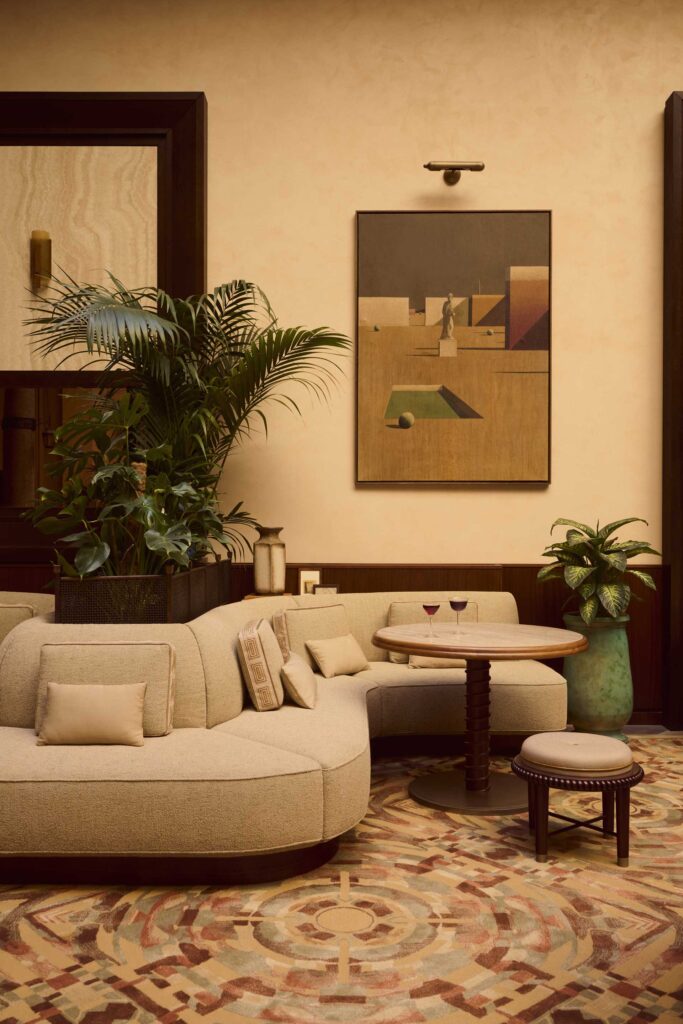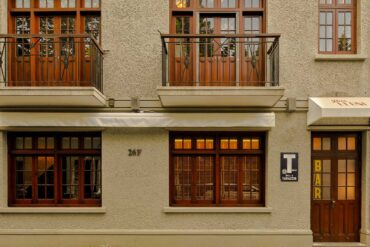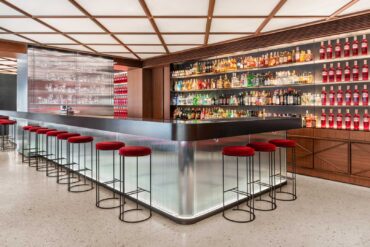In Rome, a few steps from the Pantheon, a seventeenth- century palazzo that once welcomed writers such as Stendhal and Herman Melville now becomes home to the inaugural Orient Express hotel. Architect Hugo Toro has reimagined the historic building as a dialogue between memory and modernity, shaping ninety-three rooms, thirty-six of them suites, that recall the elegance of the train’s legendary carriages with Rivolta Carmignani fabrics and bespoke trunks. Corridors echo the romance of a bygone era of travel, while every suite carries a fragment of Rome with hand-painted skies above the beds and details that span different centuries of the city’s history.
The Bar at Orient Express La Minerva

At the center of the hall, beneath a dramatic skylight, lies La Minerva Bar. Marble columns rise in quiet symmetry, while a nineteenth-century statue of the goddess Minerva presides over a setting imagined as a social meeting place by day and an intimate refuge by night. Behind the counter, Bar Manager Matteo Fatica curates a menu that blends timeless classics with Mediterranean twists, each cocktail conceived as part of the hotel’s ongoing narrative. Seasonality guides the ingredients, and the attention to detail is evident from the very first sip.
The Past, the Present, And the Future Of La Minerva

Beyond the bar, the Galleria leads to event spaces, while Gigi Rigolatto’s panoramic terrace offers sweeping views of the Pantheon, the Vittoriano and the dome of St. Peter’s, accompanied by cocktails and refined dishes. With the proud gaze of the goddess presiding over the atrium, Orient Express La Minerva returns a historic building to the city as a living space. By the end of the year and into the 2026 season, two further openings dedicated to the world of beverage will join, adding new chapters to a story that has only just begun.
The article first appeared on Coqtail – for fine drinkers. Order your copy here
Images credits Alexandre Tabaste







